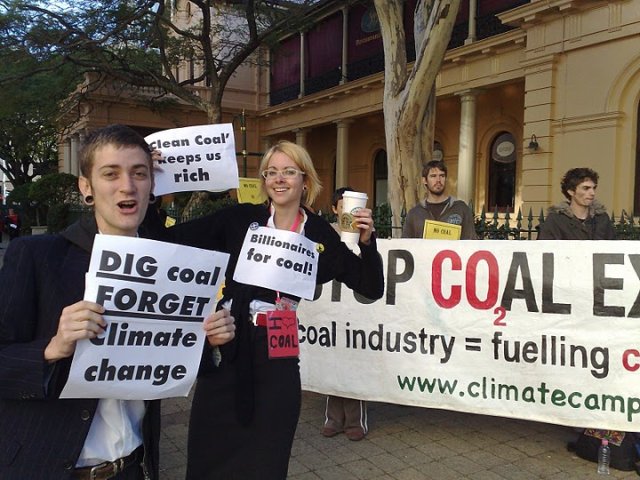
It took the Rudd government some time to work out how best to exploit the final report of Australia’s Future Tax System Review, led by Treasury Secretary Ken Henry. Which of its 138 recommendations to implement straight away, which to reject, which to stick in the too-hard basket?
The government’s answer on May 2 was mostly influenced by the coming federal election, especially after its Carbon Pollution Reduction Scheme (CPRS) and home insulation disasters. So Prime Minister Kevin Rudd and treasurer Wayne Swan have plucked out those proposals that can best help Labor defeat opposition leader Tony Abbott from the Henry review.
In their hands the Henry review becomes a “re-elect Labor” package.
Henry may well be spitting chips. Based on 1500 submissions and extensive research, his 1000-page review at least tries to outline for Australian capitalism a comprehensive, efficient, transparent and user-friendly “tax and transfer system for the 21st century”.
The review identified the economic challenges that demand a reshaped “tax architecture”. These include: funding support for an aging population; achieving higher labour force participation; sustaining a “work supportive welfare system”; implementing “efficient land and resource taxation”.
It also included increasing domestic savings (to boost privately-funded retirement income but also to reduce dependence on foreign savings); making housing more affordable; and making the whole tax system “more open, understandable and responsive”.
The review proposes to move away from the present jungle of 125 different state and federal taxes to concentrate on “four robust and efficient broad-based taxes”. These four bases were: personal income tax; business income tax that is “designed to support economic growth”, “broad, simple” private consumption taxes; and “rents from natural resources and land”.
Henry said the only other taxes that should exist were “those that improve social outcomes or market efficiency through better price signals. Such taxes should only be used where they are a better means to achieve the desired outcome than other policy instruments.”
Based on this approach, Henry proposed to ditch or review a whole swathe of taxes on insurance, payrolls, property transfer and motor vehicle purchases. Further taxes for review would be resources, luxury cars, superannuation, fuel and vehicle registration, as well as income tax on all welfare payments.
Besides the now-frozen CPRS, the new taxes Henry proposed were: a land tax that would absorb stamp duty and other conveyancing taxes; a broad-based cash flow tax to replace the GST along with state payroll and insurance taxes; a road user tax that would incorporate present fuel taxes; and a resource rent tax set at 40%.
Out of all of these, the Rudd-Swan tax plan picks up only the last proposal.
Its 40% Resource Super Profits Tax (RSPT) on the mining industry will finance a cut in company tax to 28% and an infrastructure fund for the states.
It will also fund a gradual increase in the superannuation guarantee rate to 12%, a rise from $25,000 to $50,000 to the cap on catch-up superannuation contributions and a yearly $500 super contribution payment to workers earning less than $37,000 a year.
The mining industry will also get a rebate for its resource exploration spending.
The RSPT has predictably provoked hysterical rage from the big mining corporations, which have been used to decades of tender treatment from Labor and Liberal governments.
The Minerals Council of Australia said: “It will destroy value, slow investment and increase sovereign risk in the Australian minerals industry. Thousands of potential mining industry jobs will be lost — particularly in regional Australia — and millions of Australians with shares in superannuation and minerals companies will see the value of their investments decline.”
But just how big a “revenue grab” is the RSPT? Henry noted that total resource tax and royalties had fallen from about 40% to less than 20% of industry pre-tax profits during the 2000s. He said this had “lower[ed] the community’s return from its resources”.
Investment bank Citigroup claims that the new tax will see Australia with the most heavily taxed mining industry in the world, with a total tax rate, combining company tax and the RSPT, of 58%. However, its study simply omits Norway’s 78% tax rate on petroleum income, made up of a 50% resource rent tax and a 28% company tax.
The hysteria campaign of the mining industry is already running into trouble among other sectors of big business. The superannuation industry has called for bipartisan support for the government’s tax plan, which will be a bonanza for the finance sector. Small business representatives have also voiced support.
Even a former executive director of the Minerals Council of Australia, David Buckingham, has accused Fortescue Metals boss Andrew Forrest — who said the RSPT would amount to nationalisation of the mining industry — of being ''hysterical''.
Buckingham said past mining industry threats to cut investment, jobs and exploration in relation to the petroleum resource rent tax and native title were never true. He added ''and they are not true now'' with the proposed tax.
These sorts of reaction should alert us as to the real winners and losers in the Rudd tax plan. The mining industry will get a haircut it can easily afford, but the rest of corporate Australia will gain from the reduction in the company tax rate.
Also, the increase in the superannuation guarantee will allow the government and individual businesses to claim that superannuation contribution rises can substitute for wage increases. The Hawke-Keating ALP governments ran the same argument during the years of the Prices and Incomes Accord, but workers ended up worse off.
For Labor, a $500 payment into low-paid workers superannuation funds, some write-offs for small business, and an slow increase in the superannuation guarantee rate to 12% is a small price to pay for an election win and the grateful support of the banks, superannuation industry and most of the rest of the Australian business class.